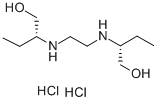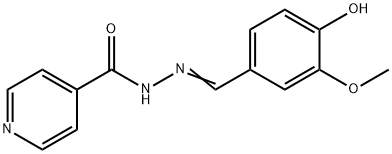Anti-tuberculous mycobacterium leprae drugs
In addition to Mycobacterium tuberculosis, other mycobacteria can also be pathogenic to humans. Because of their colonies formed during culture are not typical features of Mycobacterium tuberculosis, they are given the name "atypical mycobacteria", while now they are more commonly referred to as "non-tuberculous mycobacteria" (NTM).Mycobacterium tuberculosis can be divided into 4 groups according to the pigment production or rapid growth (Runyon, 1965). After the initial report published of Runyon's classification system, the report of disease caused by NTM lesions in the southeastern United States emerged. The epidemiology of these patients and general TB patients are different. These patients are older, most of whom are white, and their lungs are often suffered from chronic disease. However, the existing anti-TB drug treatment are ineffective. In order to understand the occurrence of NTM disease, we have found some information in the United States’ 1981-1983 epidemiological studies: the highest incidence is Mycobacterium avium complex (MAC), followed by Mycobacterium kansas and mycobacterium - Mycobacterium tumefaciens (O Brien et al., 1987). In some areas of the United States, NTM may be as common as tuberculosis. Human infections appear to arise from mycobacteria in the environment.
Leprosy is caused by leprosy bacillus infection. Mycobacterium leprae and Mycobacterium tuberculosis both belong to the genus Mycobacterium, and they have similar points in the form and response to drugs. Some anti-tuberculosis drugs can also be used for the treatment of leprosy, such as rifampicin which is the main leprosy drug, ammonia thiourea which also have a role. Anti-leprosy drugs are mainly sulfone drugs.
Click on the specific product, view the latest prices of the products, information, serving information
| Structure |
Chemical Name |
CAS |
MF |
 |
4,4'-Diaminodiphenylsulfone |
80-08-0 |
C12H12N2O2S |
 |
TMC-207 |
843663-66-1 |
C32H31BrN2O2 |
 |
Isoniazid |
54-85-3 |
C6H7N3O |
 |
Pyrazinamide |
98-96-4 |
C5H5N3O |
 |
2-Mercaptobenzimidazole |
583-39-1 |
C7H6N2S |
 |
4-Aminosalicylic acid |
65-49-6 |
C7H7NO3 |
 |
Ethionamide |
536-33-4 |
C8H10N2S |
 |
Protionamide |
14222-60-7 |
C9H12N2S |
 |
Thalidomide |
50-35-1 |
C13H10N2O4 |
 |
Calcium 4-aminosalicylate |
133-15-3 |
C7H9CaNO3 |
 |
Sodium 4-aminosalicylate dihydrate |
6018-19-5 |
C7H10NNaO4 |
 |
LYSIONOTIN |
152743-19-6 |
C18H16O7 |
 |
Sodium 4-aminosalicylate |
133-10-8 |
C7H6NNaO3 |
 |
Clofazimine |
2030-63-9 |
C27H22Cl2N4 |
 |
Ethambutol dihydrochloride |
1070-11-7 |
C10H24N2O2.2ClH |
 |
THIACETAZONE |
104-06-3 |
C10H12N4OS |
 |
thiambutosine |
500-89-0 |
C19H25N3OS |
 |
Aldesulfone Sodium |
144-75-2 |
C14H14N2Na2O6S3 |
 |
Etocarlide |
1234-30-6 |
C17H20N2O2S |
 |
Ftivazide |
149-17-7 |
C14H13N3O3 |
 |
Pasiniazid |
2066-89-9 |
C13H14N4O4 |
 |
isonoazone |
|
|
 |
Ethambutol |
74-55-5 |
C10H24N2O2 |
 |
methaniazide |
13447-95-5 |
C7H9N3O4S |
 |
Isoniazid-D4 |
774596-24-6 |
C6H7N3O |
 |
1-PHENYL-1-PROPYNE |
623-32-5 |
C20H36O2 |
 |
Furilazone |
|
|
 |
solasulfone |
133-65-3 |
C30H28N2O14S5.4Na |
 |
acediasulfone sodium |
127-60-6 |
C14H15N2NaO4S |
![ISONICOTINIC ACID 2,2'-METHYLENEDIHYDRAZIDE<footer>
<div class=]()
感谢您访问我们的网站,您可能还对以下资源感兴趣:
成人免费xx,国产又黄又湿又刺激不卡网站,成人性视频app菠萝网站,色天天天天
排五开奖号码,天空彩票与你同行 香港 小说,任九奖金预测,2020香港马会开奖结果
国产精品欧美亚洲韩国日本,爱搞视频网站,免费观看一级毛片,麻豆片免费观看在线看
狠狠干天天爽,国产精品天天看天天爽,99色播,十三以下岁女子毛片
国产精品2022不卡在线观看,久久久久青草线蕉亚洲麻豆,91蜜桃国产成人精品区,亚洲精品乱码久久久久久蜜桃图片
欧美综合图区亚洲综合图区69,国产日韩久久久精品影院首页,另类综合视频,国产精品福利久久
久久澳门,h视频在线观看免费网站,69黄在线看片免费视频,精品久久伊人
|